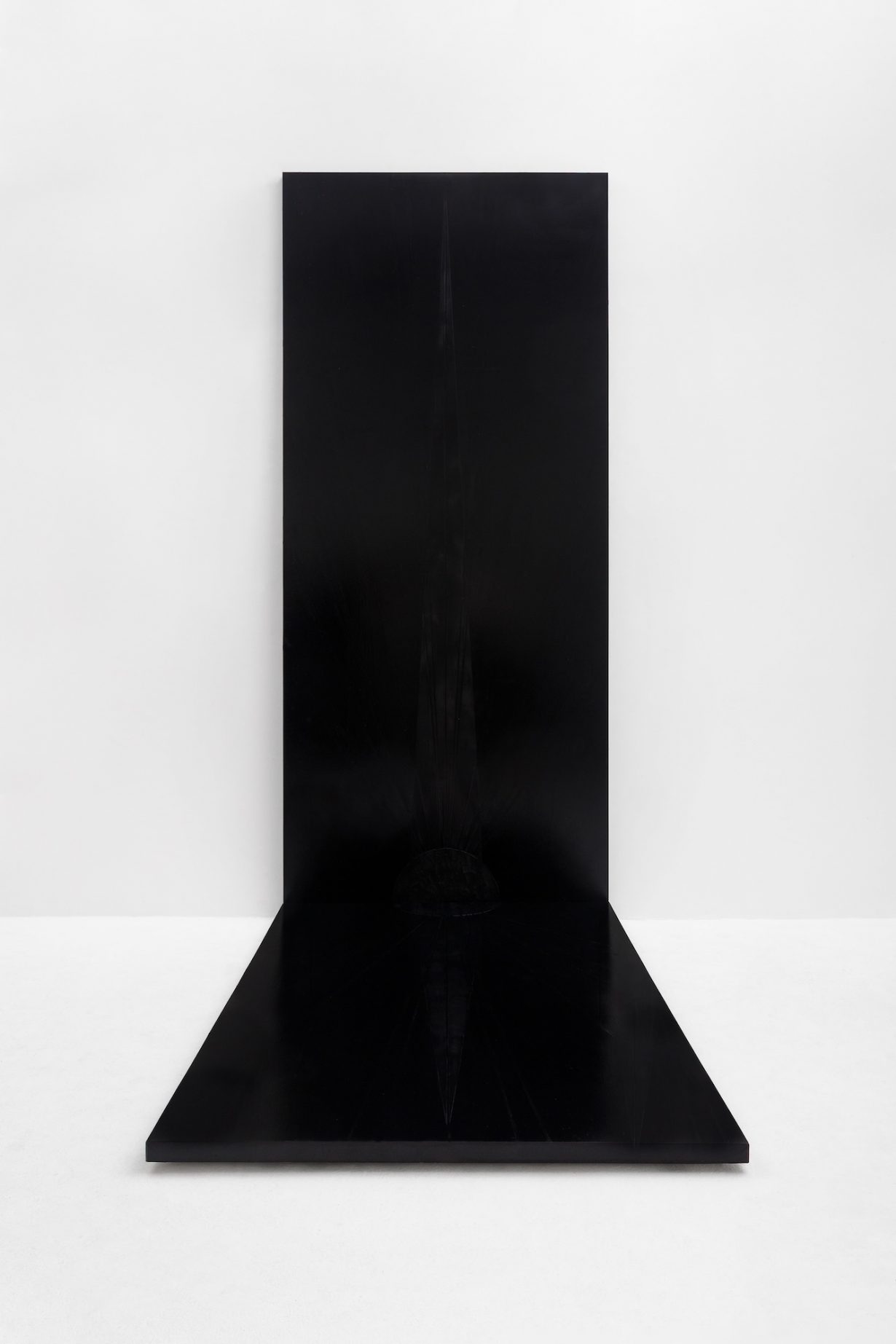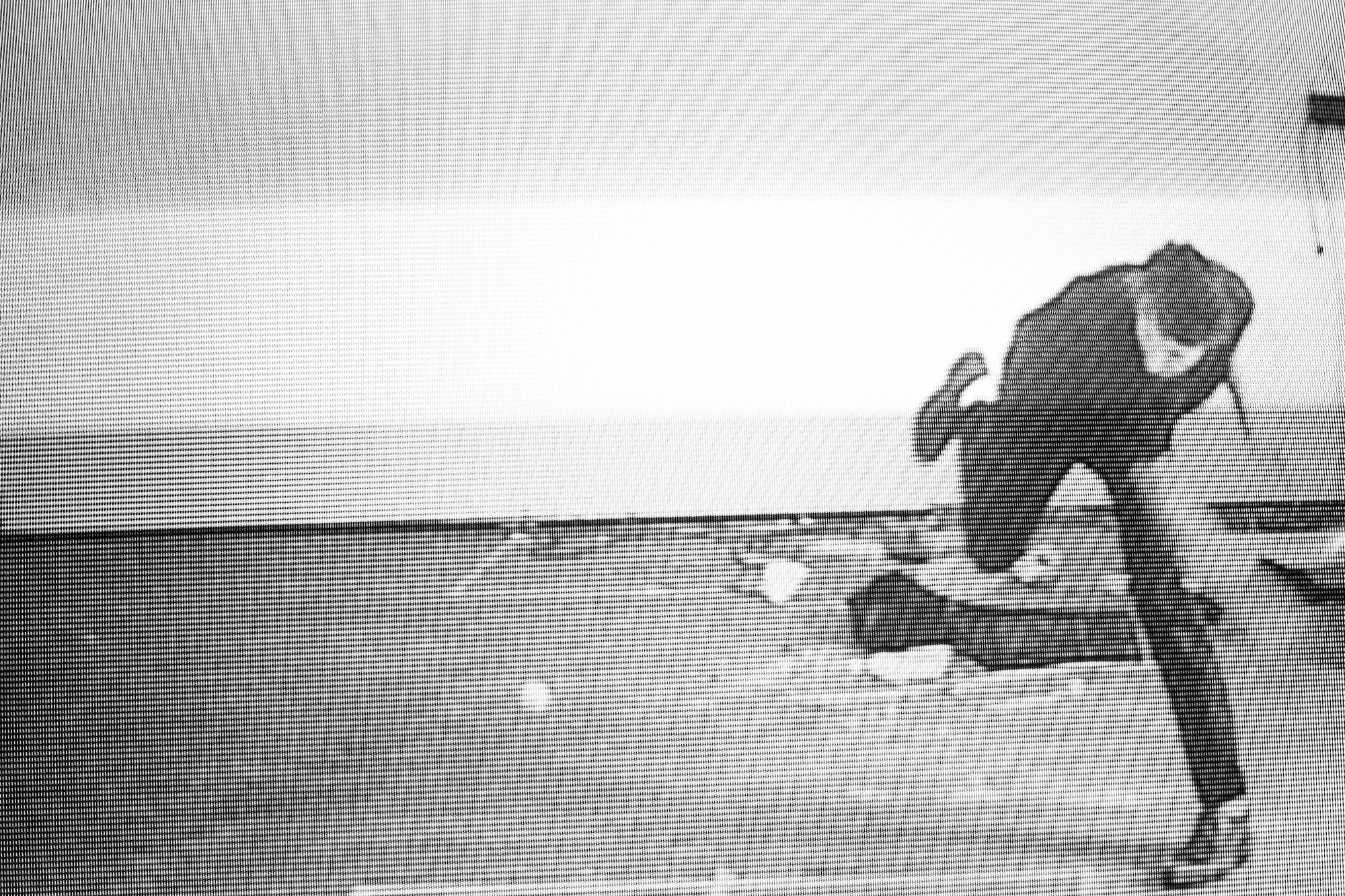An astonishing exhibition joins the artists in their exploration of making absence physically present
Being a month-old gallery and presenting a two-artist show pairing a young painter with Bruce Nauman is, at the very least, risky. What could have been a marketing move is, in fact, a quietly astonishing exhibition anchored in a dialogue between nine monolithic black paintings by Brazilian artist Caio Carpinelli and three historical videos by Nauman.
The exhibition opens with a monumental arrangement of the black paintings, collectively titled Chamber of Reflection (all 2025); three on each side, they confront one another across the room, like silent sentinels welcoming the viewer. Towering up to the gallery’s double-height ceiling, their austere symmetry evokes both ritual and restraint. Each canvas comprises a deeply layered field of black paint inhabited by almost esoteric compositions of circular elements and concentric rays at various heights, as if registering solar or lunar positions across a circadian cycle. These forms emerge subtly, perceived through faint halos – the same black pigment floods both figure and ground, but nuanced shifts, from gesso underlayers to varnish gloss, create barely perceptible ruptures in the uniform dark, as though light were being pulled into a black hole.
Carpinelli’s paintings evoke emptiness while paradoxically emphasising their materiality through the oil paint’s thick reflective surface. Although initially recalling the dark paintings that the late Mark Rothko painted for his eponymous chapel, they come closer to Michael Heizer’s Negative Megalith #5 (1998). In that work, Heizer carves a massive, vertical void from a wall and inserts a menhirlike stone, the negative space emphasised by the solid material. Here too absence is made physically present.

Two videos by Bruce Nauman are presented in the second gallery room on Hantarex monitors, positioned close to the floor and slightly tilted upward on white plinths. In Bouncing in the Corner, No. 2: Upside Down (1969), Nauman repeatedly collides his body against the corner of two walls, like an irregular pendulum attempting to animate the dead space using only his body. Next to it, Violin Tuned D.E.A.D. (1969) plays: instead of tuning the violin to the standard G-D-A-E, Nauman plays all four strings simultaneously, as if the act of detuning – turning the instrument ‘dead’ (D-E-A-D) by linguistic play – still affirms its sonic presence. In both videos, Nauman continuously performs the actions for one hour.

The only place where Carpinelli’s and Nauman’s works share the same space is on the gallery’s mezzanine. The lone black painting is made of two parts – but unlike the others, which are also diptychs but arranged vertically, here the work’s upper part is on the wall, connected at its base to the lower canvas, which projects across the floor. Two prominent circular forms on the surface of each echo Nauman’s video Bouncing Two Balls Between the Floor and Ceiling with Changing Rhythms (1967–68), positioned right in front of the painting. The delicate formal conversation between the two highlights the essentiality of forms and the austerity of gestures.
Nothing else happens. The repeated acts in Nauman’s videos and the formal recurrences in Carpinelli’s paintings generate a condition where neither preconception nor surprise exists, allowing for an extended, immersive and unmediated encounter with the objects. This pairing of a canonical artist with one only just emerging proves effective, not only by flattening art-historical hierarchy but by creating a space of mutual reflection and experiential immediacy, each work reinforcing the other. It’s an artificial and controlled space akin to scientific experiments – a phenomenological chamber of reflection.
Chamber of Reflection at Yehudi Hollander-Pappi, São Paulo, 29 April – 22 May
From the Summer 2025 issue of ArtReview – get your copy.
